Renyuan Zhang
Boosting Single Positive Multi-label Classification with Generalized Robust Loss
May 06, 2024



Abstract:Multi-label learning (MLL) requires comprehensive multi-semantic annotations that is hard to fully obtain, thus often resulting in missing labels scenarios. In this paper, we investigate Single Positive Multi-label Learning (SPML), where each image is associated with merely one positive label. Existing SPML methods only focus on designing losses using mechanisms such as hard pseudo-labeling and robust losses, mostly leading to unacceptable false negatives. To address this issue, we first propose a generalized loss framework based on expected risk minimization to provide soft pseudo labels, and point out that the former losses can be seamlessly converted into our framework. In particular, we design a novel robust loss based on our framework, which enjoys flexible coordination between false positives and false negatives, and can additionally deal with the imbalance between positive and negative samples. Extensive experiments show that our approach can significantly improve SPML performance and outperform the vast majority of state-of-the-art methods on all the four benchmarks.
Multi-Tier Platform for Cognizing Massive Electroencephalogram
Apr 21, 2022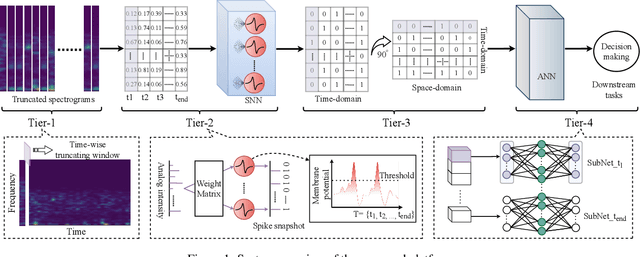
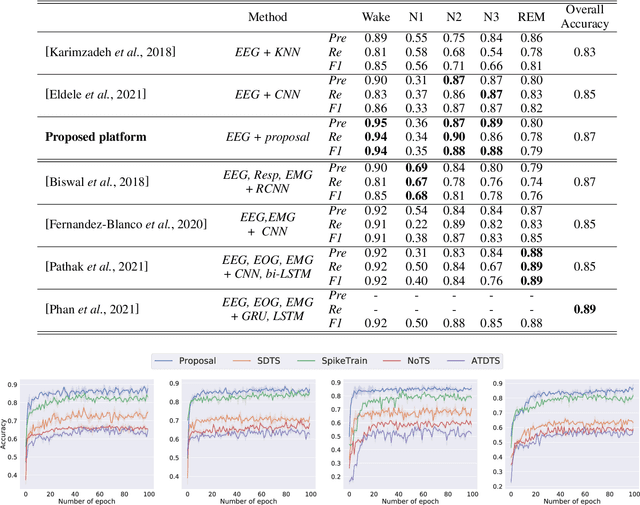
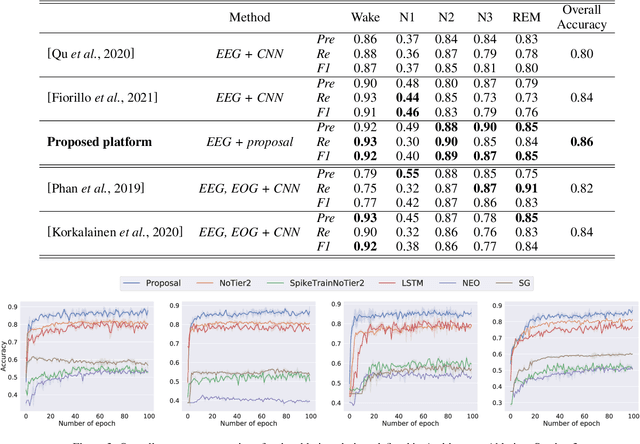
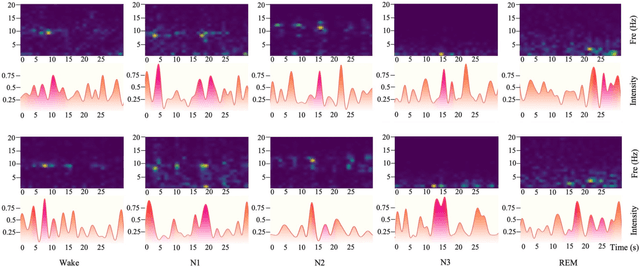
Abstract:An end-to-end platform assembling multiple tiers is built for precisely cognizing brain activities. Being fed massive electroencephalogram (EEG) data, the time-frequency spectrograms are conventionally projected into the episode-wise feature matrices (seen as tier-1). A spiking neural network (SNN) based tier is designed to distill the principle information in terms of spike-streams from the rare features, which maintains the temporal implication in the nature of EEGs. The proposed tier-3 transposes time- and space-domain of spike patterns from the SNN; and feeds the transposed pattern-matrices into an artificial neural network (ANN, Transformer specifically) known as tier-4, where a special spanning topology is proposed to match the two-dimensional input form. In this manner, cognition such as classification is conducted with high accuracy. For proof-of-concept, the sleep stage scoring problem is demonstrated by introducing multiple EEG datasets with the largest comprising 42,560 hours recorded from 5,793 subjects. From experiment results, our platform achieves the general cognition overall accuracy of 87% by leveraging sole EEG, which is 2% superior to the state-of-the-art. Moreover, our developed multi-tier methodology offers visible and graphical interpretations of the temporal characteristics of EEG by identifying the critical episodes, which is demanded in neurodynamics but hardly appears in conventional cognition scenarios.
Adaptive Spike-Like Representation of EEG Signals for Sleep Stages Scoring
Apr 02, 2022
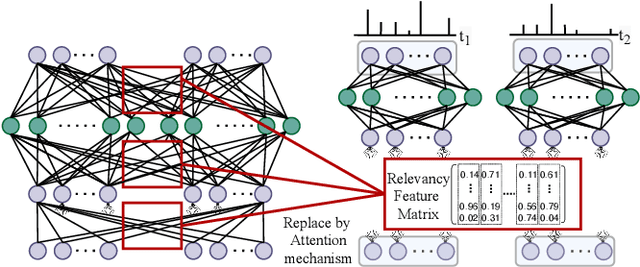
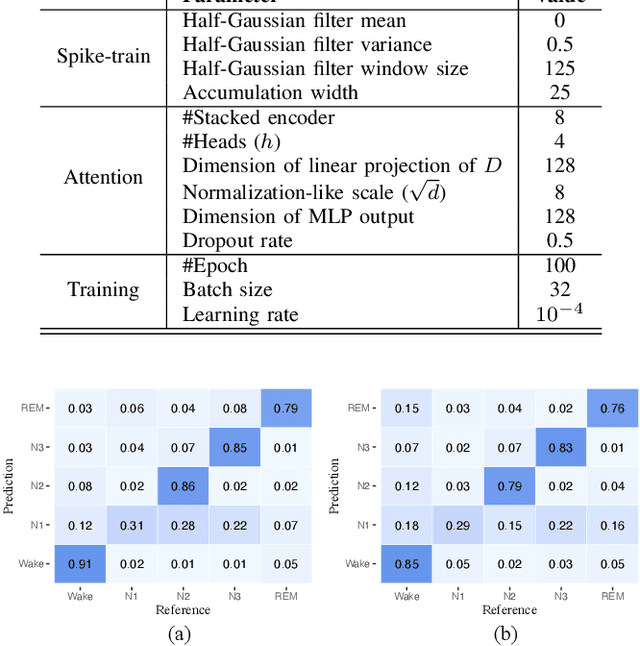
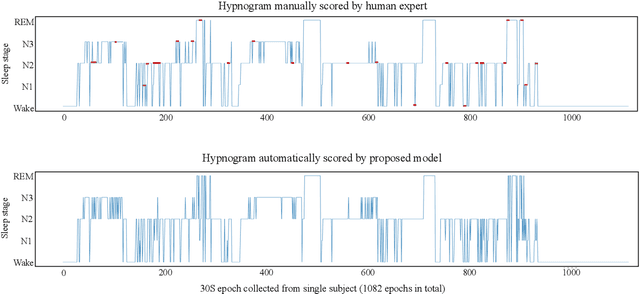
Abstract:Recently there has seen promising results on automatic stage scoring by extracting spatio-temporal features from electroencephalogram (EEG). Such methods entail laborious manual feature engineering and domain knowledge. In this study, we propose an adaptive scheme to probabilistically encode, filter and accumulate the input signals and weight the resultant features by the half-Gaussian probabilities of signal intensities. The adaptive representations are subsequently fed into a transformer model to automatically mine the relevance between features and corresponding stages. Extensive experiments on the largest public dataset against state-of-the-art methods validate the effectiveness of our proposed method and reveal promising future directions.
 Add to Chrome
Add to Chrome Add to Firefox
Add to Firefox Add to Edge
Add to Edge